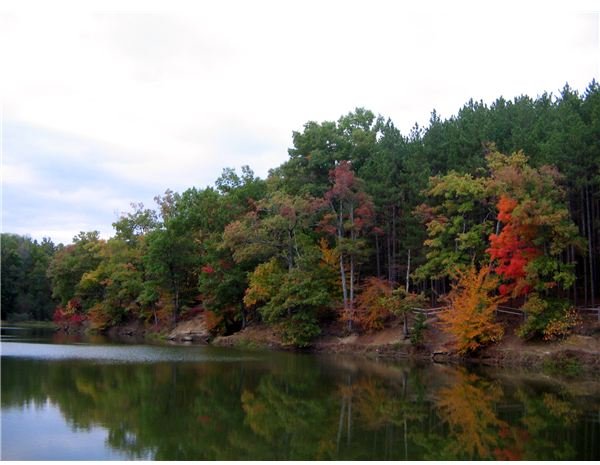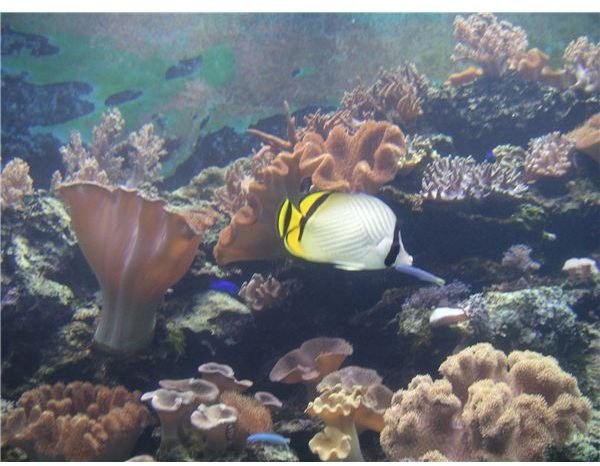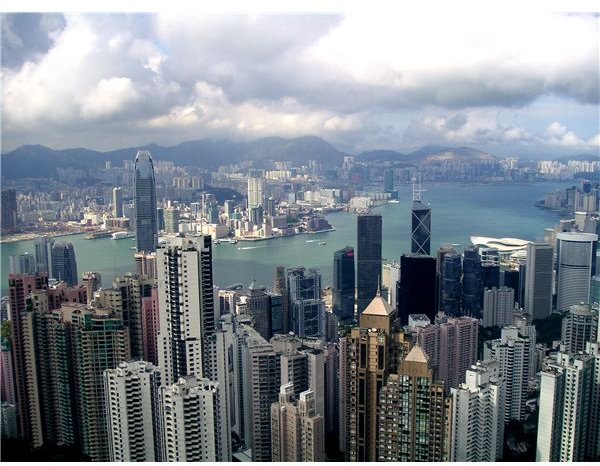A Definition of an Ecosystem as a Basic Guide for Students
The Meaning
An ecosystem consists of:
- all the species
- within a specific place,
- at a specific timeframe;
- all of their interactions with each other, and,
- all the physical and chemical factors of the surrounding environment.
Let’s go over the meaning of each part.
1. All The Species
The simplest way to think of all the species within an ecosystem is to make a list. The list would include not just the big, obvious things like trees, birds, and giraffes, but also the small and often overlooked, like worms, fungi, and soil microbes. The total number of species is called “species richness” - one of the two measures of ecosystem biodiversity.
The other measure of biodiversity is “relative abundance” - how many of each species there is compared to other species. Relative abundance accounts for how well-represented each species is, which can make an ecosystem with few total species more diverse than one with many. For example, a corporate farm’s cornfield may have many species in it, including worms, insects, birds, and rodents. But the vast majority of organisms are corn plants. Such an ecological environment is not very diverse.
Number of individuals per species is not always the best way to look at relative abundance, because some species are larger than others. A single tree is much more massive than a single soil microbe. Measuring total biomass per species is another way of looking at biodiversity rather than counting individuals.
Aside from simply making a list, it’s often more useful to group them in some way. Some examples are:
- By taxonomy - all birds, all trees, all rodents, all insects, etc.
- By trophic level - primary producers, herbivores, carnivores, decomposers, etc.
- By functional role or ecological guild - carnivorous species that actively chase down their food, carnivores that wait for food to pass their hiding place (ambush predators), species that make traps (example: spider webs), species that eat things that have already died (scavengers), etc.
2. A Specific Place

Some ecosystems have easily-defined boundaries. For example, a pond ends at its edges. A salt marsh ends at the highest reaches of saltwater where the treeline begins.
Many others don’t have obvious boundaries, and their edges are more of a petering out or gradation into a different type of ecosystem. Ecologists often define the boundaries according to the range of a particular species, and choose an arbitrary line based on decreasing abundance, either overall or relative to other species in the area.
3. A Specific Timeframe

In general, timeframe is a period from when a particular type of ecosystem can begin existing in a particular place, until environmental factors have changed so much that it can no longer exist there. Timeframe is relatively easy to define on a large scale - for example, where we now have ocean, there used to be plains. Where once it was cold, now it is warm. Where once it was wet, now it is dry.
On a smaller scale, the exact beginning and end of a timeframe can be hard to define, since many types of one-way ecological and environmental changes are gradual.
4. All Their Interactions: Predation and Competition
The species within an ecosystem can interact with each other in several ways. Most obvious is predator-prey interactions, where one species kills and eats another. This can refer to carnivores eating other animals, or herbivores grazing on plants, or carnivorous plants eating animals.

Competition occurs when more than one species wants to use the same limited resource. The resource is most often food, but can also be living space. For example, in many marine environments, benthic invertebrates like barnacles need hard rocky surfaces where they can attach. Such surfaces are limited in areas where the bottom is mostly sand or mud. In an estuarine oyster reef, new oyster arrivals to the reef often attach themselves to the shells of established oysters.
Competition is sometimes considered a form of symbiosis - a type where two species interact to the detriment of both. Symbiosis comes in several other forms: mutualism, commensalism, and parasitism.
4. All Their Interactions: Symbiotic Relationships

In mutualism, two species interact in a way that is beneficial to both. An example is cleaner fish found around coral reefs - where a small fish eats food debris, dead skin, and parasites off of a larger fish, including within their mouths and between their teeth. The small fish gets food while the larger fish gets healthcare.
Commensalism is where one species benefits from associating with another, but neither helps nor harms the other. For example: birds that follow large grazing mammals in a grassland, which stir up insects as they move about, which the birds then eat.
Parasite species benefit from associating with another species while actively harming them, but without (intentionally) killing them. For example, tapeworms live inside the digestive tract of vertebrates, absorbing some of the nutrients from food that the vertebrate eats. Mosquitoes and fleas ingest blood from mammals and birds. Cuckoos and cowbirds lay their eggs in the nests of other bird species, often displacing the chicks of the other species in the process.
Finally, one species can invade (or infect) the body of another to cause disease. The infecting species can be a parasite if it’s some sort of multicellular eukaryote, but is called a pathogen if it’s a bacterium, virus, or fungus.
5. The Surrounding Environment

The physical and chemical conditions of the surrounding environment - all the non-biological (abiotic) factors - are the foundational basis for any ecosystem. Conditions include temperature - both at any given time and seasonal ranges. Amount of sunlight for photosynthesis is usually important, but certain types of other chemical compounds can provide an energy source for chemosynthesis in support of an ecosystem beyond light. Ground substrate is another important condition - hard rocky surface or sand or mud, horizontal or steeply inclined. In terrestrial ecosystems, there’s amount of rainfall and humidity, wind strength, and soil conditions like fertility and acidity. In aquatic ecosystems there’s water salinity and pH, water movement (flow rate, wave strength), and amount and types of nutrients.
Abiotic factors also include forces of ecological disturbance - strong destructive storms, fires, earthquakes, and other natural disasters. Species must be able to withstand periodic unpredictable disturbances in order to live in some ecological environments.
Ecosystem biota can also alter the environment. Examples are reef building by corals and oysters, tree growth to create living spaces in forests, and urban development. Biotic structures can change wind and wave movement patterns, increase or decrease temperatures, and cause changes in a variety of other abiotic factors.
Final Thoughts
Ecosystems can be large or small, simple or complex - anywhere with one or more species living in a stable balance of interactions with other species and the conditions of the surrounding environment.
A collection of species in a given time and place, along with their interactions, is called an ecological community. An ecological community, along with the abiotic environment, completes this definition.
References and Photo Credits
Ecology: Individuals, Populations and Communities. 2nd ed. Begon, M., J.L. Harper, and C.R. Townsend. Blackwell Scientific Publications, Inc. 1990.
Mongolian Grassland picture by Shizhao, used under CC-A-SA 3.0 license.
Baja California Desert picture by Tomas Castelazo, CC-A-SA 2.5 license.
All other photos by article author.
